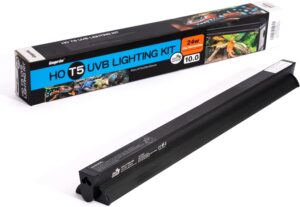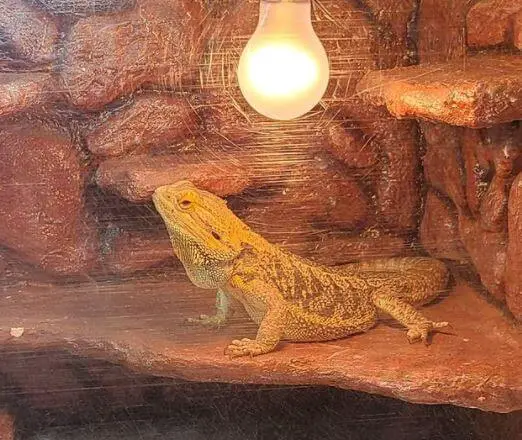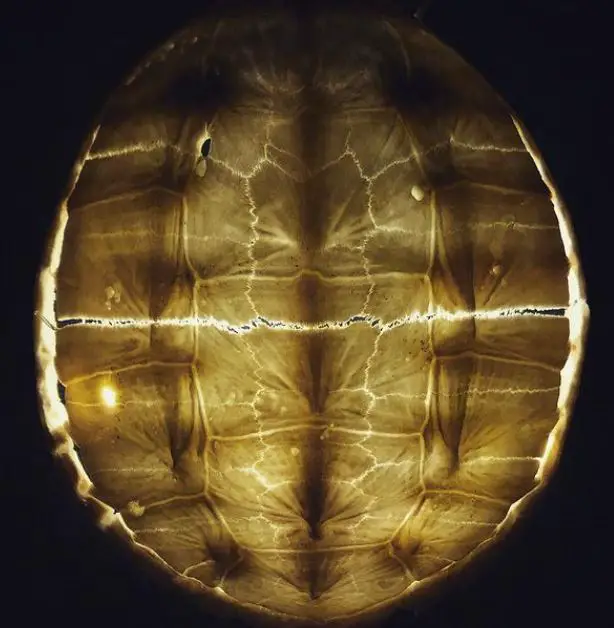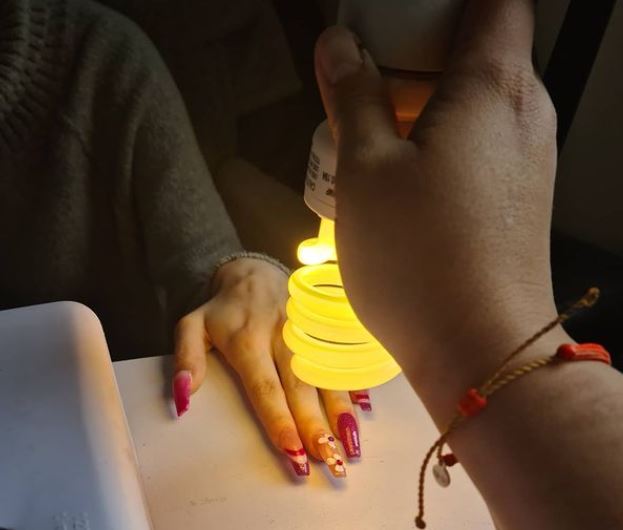Do you own a pet reptile? If so, then you know that reptiles need UV lights in their lives. But are reptile UV lights safe for humans?
 UV light is beneficial to reptiles because it helps them produce vitamin D. It also offers other benefits such as aiding in calcium absorption and preventing metabolic bone disease.
UV light is beneficial to reptiles because it helps them produce vitamin D. It also offers other benefits such as aiding in calcium absorption and preventing metabolic bone disease.
However, there are dangers that come with exposure to UV lights, including eye damage or skin cancer.
This article will help answer your questions about the safety of these lights and how they can be used safely!
Related Posts:
- 7 Best Heat Lamps for Tortoise
- Top 7 Best UVB Bulbs for a Sulcata Tortoise
- How Long Can a Tortoise Live Without UV Light?
- Are Leopard Geckos Sensitive to Light?
- How to Use a Reptile Light Clamp?
What Are Reptile UV Lights?
Reptile UV lights are often used to mimic the sun’s natural ultraviolet rays, which are important for the health of reptiles.
In fact, a lack of these rays can cause serious problems with growth and development as well as suppress the immune system in your scaly friend.
Moreover, reptile UV lights are an essential part of the habitat for reptiles. Reptiles need light in order to regulate their temperature and help them digest food properly.
However, there’s more than one kind of UV light that you will want to keep your eye out for when building or purchasing a reptile habitat.

These lights have been proven safe for reptiles, but they could cause skin cancer and eye problems if humans got exposed to them for a long time.
Are Reptile UV Lights Safe for Humans?
Reptile UV lights are not safe for humans if exposed for long periods.
Reptile UV lights are often used to mimic the sun’s natural ultraviolet rays.
If you are wondering if reptile UV lights are safe for humans, consider that exposure to natural sunlight is not a good idea for extended periods of time because it can lead to skin cancer.
The same goes for artificial light.
However, it is still recommended that you be careful when using one. Make sure your pet cannot access the light and avoid direct skin contact with the bulb or beam of UV.
It is always wise to take precautions when using any product around the house. Always follow the manufacturer’s instructions carefully and do not leave a light on for longer than required.

What UV Lights Should You Use for Reptiles?
1. Incandescent Light
Incandescent lighting is the most basic kind of reptile light, which emits a yellow color spectrum that can make your reptiles look sickly and unhealthy.
While these lights may be suitable for providing illumination in some settings, they can pose various problems for reptiles when used as the primary or sole source of lighting in their enclosures.
It produces a significant amount of heat as a byproduct of producing light, which reptiles may not be able to handle.
2. Fluorescent Light
Fluorescent lighting has greater variety than incandescent for UVB output but does not provide as much heat as incandescent lighting does.
Instead, fluorescent lamps emit shortwave UVA rays, visible to us as blue or violet hues in daylight.
It efficiently synthesizes vitamin D3, promotes proper calcium absorption, and prevents metabolic bone disease.
It provides reptiles with the necessary light spectrum for their well-being without the drawbacks associated with excessive heat production.
3. LED Light
LED lighting can put out UVB and heat at varying degrees. There are different types of LED lights that you can use for reptiles, such as heat lamps, bulbs, and strips.
Before making your purchase, here are the things to keep in mind:
- Ensure the LED light provides a full spectrum of light, including UVB, UVA, and visible light, tailored to your reptile’s specific needs.
- Check the UVB output level to ensure it matches your reptile’s requirements for vitamin D3 synthesis and overall health.
- Opt for LED lights that emit minimal heat to prevent overheating in the enclosure.
- Determine the appropriate size and coverage of the LED light to suit your reptile’s enclosure size.

Frequently Asked Questions About Reptile UV Lights and Humans
1. Can Reptile Lighting Cause Cancer?
The answer is not clear-cut, but there are some indicators that point in the direction of a possible yes.
UV lights, particularly UVB lights, are essential for reptiles as they help with vitamin D3 synthesis and calcium metabolism.
But in humans, excessive exposure to UV radiation, especially from the sun or tanning beds, is a well-known risk factor for skin cancer.
2. Is It Dangerous to Utilize an Infrared Basking Spotlight for a Turtle?
No, it is not dangerous if you follow the guidelines for usage.
If used properly, there are no negative side effects to having an infrared basking spotlight in your turtle’s habitat.
3. Will Iguanas Sleep Better With a Heat Lamp?
Heat lamps can help your iguana regulate their body temperature. It leads to healthy sleeping patterns during the time that you provide this type of heating method.
Conclusion
Are reptile UV lights safe for humans? Only at a certain point. If you are not careful, it can be potentially harmful to your eyes with the high-intensity light that many of these bulbs produce.
Even if sellers claim it is safe to use at home with family members who have sensitive eyes, it wouldn’t be true for everyone and should never be assumed as such without further research being done beforehand.
Further Reading:
- 7 Best Lighting for Chameleons
- 9 Best Heat Lamps for Bearded Dragon
- 5 Best Bearded Dragon Lighting Setups


